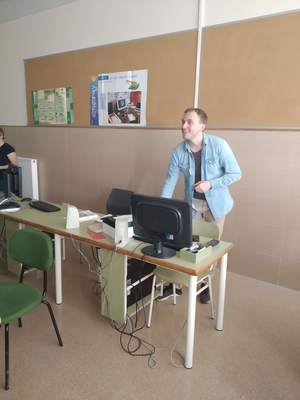
Victor Shestakov
Narva Kreenholmi Gümnaasium (Estonia)
What is your water footprint?
The amount of water used to produce each of the goods and services we use is measured by the water footprint. In this lesson the class explored the surprising amount of water used in producing everyday products.
12th grade students were given practice putting a design problem into perspective. By taking on the imaginary role of Sustainability Chief for a company and being tasked with better understanding the water footprints of their company’s product, students practiced identifying what they know, what they don’t know, and what questions to ask to better understand the constraints of a design challenge.
During the lesson the students developed their knowledge of how the goods we buy and use can contribute to our indirect water footprint, established what they already know about a problem and what questions to ask to better understand the context and constraints of a design solution, practice describing the info graphic and writing a review about the supply chain water footprint of the cola with the class, develop their communication and interaction skills, sensibility to an intercultural topic, discovering differences/similarities between cultures.
The students were to brainstorm the ways in which they use water and write down all the ideas on the virtual board in Padlet.com.
Then students gave their own definition of “Water footprint” after reading the article and calculated their water footprint using the resourse watercalculator.org. These tasks were followed by a discussion.
The next task was to review the info graphic, identifying the problems from the supply chain and making a review with the class about the supply chain water footprint of coca cola.
The lesson’s final task was problem solving. Students chose a country to represent (or use the suggested one), explored the information about water footprint in the selected country using the resource “National water footprint explorer” (waterfootprintassessmenttool.org/national-explorer/).
These are the steps the students have followed:
STEP 1: Describe the water footprint of your country and of each citizen.
STEP 2: Choose another country and compare it to yours.
STEP 3: Find out how much of that footprint lies within a country (internal) and how much is related to water used for imported products or ingredients (external).
The feedback from students was very positive. The amount of water used in producing everyday products turned out to be very surprising for them. They didn’t pay enough attention to the use of water in their daily life. So the students expressed the idea of improving their ecological footprint and more respectful conception of nature.
I consider the lesson to be an important step in achieving a meaningful use of water. Students were engaged in all activities, practiced putting a design problem into perspective, developing their communication skills.